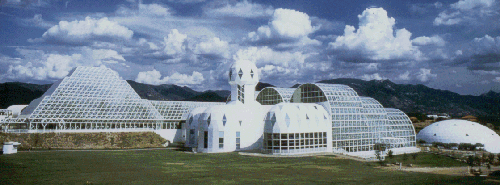For over a decade, landscape ecologist Dr. Eric W. Sandstorms has tried to understand and recreate what Manhattan Island was like before Europeans arrived in 1609. Sanderson funneled knowledge from old maps and modern ecological studies though Miraweb technology to recreate images of Manhattan’s 1609 landscape.
His work tries to reveal the forested land New York City used to have before concrete and skyscrapers. Sanderson cites that this project aims to increase understanding of the baseline ecology for specific NYC sites, pinpoint how humans interfere and influence the landscape, and influence people to make smart choices to help mankind and wildlife alike.
This link can help people understand FLC ecology. (includes a geo-referenced map allows visual of vegetation with modern streets overlay). Work this is part of a movement to reconnect people with their environments.
A few years ago, Mayor Bloomberg unveiled a sustainability plan for the New York City with a vision and set of goals to be completed by 2030. The city has already taken efforts to ensure a high quality of life for future residents and tourists of New York, halting traffic in Times Square to improve air quality as well as creating 500 more acres of park and planting 500,000 more trees to improve natural cycling process and to increase the amount of vegetated areas. New York is constantly looking for ways to improve the efficiency, expediency, and sustainability for the transportation of its goods and services.
Over a hundred years ago, the city took extensive action to implement large-scale civil engineering projects like the Brooklyn Bridge, Grand Central, and the subway system. City planners believed that the success of the city relied heavily on the health of public transportation systems. When public transportation systems received poor funding in the late 1970’s and 1980’s, the underfunded and graffiti-smothered transit system was not a safe and reliable means of transportation to many people and it greatly hurt New York’s economy. Moving forward a few decades the system was improved and so did the quality of life. Some of PlaNYC’s largest aims is to maximize clean air and clean water. NYC’s worst air pollution actually comes from burning dirty fuels in buildings and outweighs the amount of pollution created from cars and trucks. As for water, New York water supply consists of three major watersheds that together provide some of the cleanest water among America’s largest cities. However, the city is wary of the dangers linked to fracking (induced hydraulic fracking), which has the potential to infiltrate and pollute the city’s water systems. Both clean air and water aim to increase the long-term quality of life for the city and the surrounding environment, which also includes parks. Ideally, the city wants to have all NYC residents to live within 10 minutes of an accessible park because parks offer a lot to increase the quality of life. City officials cite parks to be spaces that encourage families to raise their kids in the city and citizens to embrace active lifestyles, and of course, provide wildlife habitat and facilitate the earth’s natural cycling systems to clean carbon dioxide from the air and pollutants from the water.
Apparently, people are paying more attention to the health benefits associated with spending time in natural settings. According to conservation biologist Dr. Wilson, he believes that humans are naturally inclined to love nature on deep level, a level that transcends socio-economic and cultural boundaries. He calls this attraction, biophilia, or a person’s “instinctive love of nature” (E.O. Wilson). Studies have noticed a corollary between human health and contact with nature, noting that the more people spend outside in natural environments, the stronger their immune system, the better their test scores, and the higher their overall happiness and satisfaction. Proponents of biophilia also stress the importance of nature exposure when it comes to children, arguing that children function and grow better when nature is a part of their daily experience.
The Bronx River was once a cool and clear body of water that supported a lush compilation of ecosystems (especially different kinds of forests and salt marshes), teemed with wildlife, and sustained the Lenape and other native tribes. Eventually as industrialism spread northward from Manhattan and incorporated the Bronx as a New York City borough piece by piece, the Bronx River began to feel the stress of industrialism, losing it’s protective wildlife barriers and species as well as becoming more and more polluted.
The Bronx River will need to undergo over a century of restoration and people like Dr. Sanderson can use old maps and geological referencing to understand what a specific environment along the banks of the river was before it was developed and what specific efforts and end results should planned to properly restore that site. Many separate projects to restore the river will eventually link together to restore the health of the ecosystem. Examples of these projects include fish replenishment, oyster habitat creation, invasive species removal, native species planting, and erosion control. Many of these projects are already underway and will continue to happen into the distant future.
To clean pollution in the Bronx River, Governor Cuomo office pledged 1.8 million dollars to many NYC entities (including the Bronx River Alliance, the New York Botanical Garden, the New York City Parks Department, and more) for the creation of green infrastructure, specifically wetlands. In comparison to any kind of pollution control equipment that humans could manufacture, natural wetlands are a much cheaper means of cleaning water pollution. It would cost 8 billion dollars plus 300-400 dollars annually to build and operate a man-made filtration system whereas it would only cost 200 dollars annually of preserving ecosystems and managing them sustainably to do the same thing. Policy makers are beginning to realize that nature is more than beautiful, but economical as well.
Many poets have historically been inspired by the Bronx River area and have commented on the effects of the river’s beauty. One of these poets was Joseph Rodman Drake, commented on the river, “Sweet sights, sweet sounds, all sights, and sounds exciting, / Oh! ‘twas a ravishing spot formed for a poet’s dwelling” (Drake), soon mourning, “And did I leave thy loveliness, to stand / again in the dull world of earthly blindness? (Drake).
Words like Joseph Rodman Drake portray how the natural landscape can heal the heart. That the environment serves a greater purpose than resource use. Joseph Rodman Drake wrote that poem, and though he died at age 25, his presence can still be seen/felt in the green, pastoral cemetery named after him. The Bronx’s sanctuary from the city, and particularly Fordham university’s land, also inspired another poet, Edgar Allen Poe. Although Poe never made direct references to the Bronx River, it no doubt inspired his poetry.
Similar to the work that Dr. Sanderson, Gov. Cuomo, Mayor Bloomberg, and many New York organizations are doing, many people at Fordham University are trying to do something similar. Efforts have been made to understand the historical, ecological past of Fordham’s surrounding area to figure out how to be more sustainable. Fordham University can trace its roots back to manor developments after the Revolutionary War and then the creation of St. John’s college (a collection of old buildings, including a church and some buildings for classes and administration that finally connected to a rail line in October of 1841). Rose Hill was an ecologically diverse and agriculturally productive land that over time has been developed into the modern day campus. The old campus had a pasture with 30-40 cows, fruit orchards (where the Gymnasium now stands), a wooded hill (where Keating Hall now stands) and salt marshes (where parking lots now cover them).
Fordham is working toward being a more sustainable institution. The university sustainability policy tries to be as minimally invasive to the environment and as naturally beneficial as possible, including efforts to minimize energy waste and material waste (via more efficient energy and recycling programs), achieve LEED Silver status for all new buildings, encourage forms of walking and biking over cars, cut the university’s carbon emissions 30 percent by 2017, increase environmental awareness in education, and utilize the schools’ partnerships with the Bronx Zoo, the New York Botanical Gardens, the City of New York, and other organizations (also wanting students to participate in these organizations for internship/real-world experience opportunities).

Fordham Students of SEAJ (Students for Environmental Awareness and Justice) at the Washington DC Rally. SEAJ is participating in a divestment campaign.
There are a slew of national organizations that primarily focus on development of sustainable college campuses. AASHE offers opportunities for institutions and individuals to forward environmentally sustainable practices, hosting conferences and working with universities to reach their sustainability goals. ULSF (Association of University Leaders for Sustainable Future) similarly focuses on environmental sustainability outreach, teaching, and research at colleges and universities nationwide. The National Wildlife Federation works with universities though their Campus Ecology Program, which at Fordham University, manifested itself in Sodexo’s campaign to spread the world about the environmental impacts associated with eating certain foods. Additionally, 350.org is leading a massive divestment campaign called “Fossil Free”, encouraging university students and faculty to halt their school’s investment(s) in dirty energy and allocate those funds in green energy and sustainable technologies. Fordham’s own student-lead environmental organization, SEAJ (Students for Environmental Awareness and Justice) is leading a Fossil Free divestment campaign against the university, as well as operating St. Rose’s Garden (a garden that raises locally-grown, organic food to sell to students as well as donate to local charities, and more). Additionally, St. Rose’s CSA (Community Supported Agriculture) is a cooperative vegetable buying club that invests in local farms, like Norwich Meadows Farm, providing the capital needed to cultivate a certain amount of food and distribute the final produce to student customers throughout the year.
I think it’s heartening to know that national organizations, the City of New York, and Fordham University are all making efforts to increase sustainable practices. Even the auto industry is starting to do something, for according to the Environmental News Network, electric Car sales have more than tripled in 2012, the Obama Administration has invested 7.5 billion dollars in electric cars, and General Motors and Nissan combined have invested 6 billion dollars more.

Automobiles caught in highway traffic. Compare the amount of natural resources, power, and pollution to travel daily by car instead of living close enough to school and work that biking and walking are options.
Granted, these statistics can be potentially disfiguring of the real environmental impact. This movement toward electric, zero-emission cars does boost the economy and lessen CO2 pollution (in comparison to a gaz-guzzling automobile), but it isn’t fully embracive of the interdisciplinary nature of sustainable living. From a technological standpoint, these electric cars still need to use large amounts of natural resources to make the car and run the factory that produces the cars. From an environmental science standpoint, natural resources would be extracted at high rates that disturb natural environments and destroy habitats/wildlife species. From a design standpoint, cars aren’t elements that contribute well to a high density, low impact infrastructure and transportation plan. However, these cars do increase environmental awareness and are less environmentally degrading than producing Hummers.
After all, to connect back to New York City and the readings for this week, the usage of cars, sprawl, and highways systems wouldn’t respect our knowledge of how to live sustainably in NYC’s environment. The Lenape knew how to live on only the local resources of the land, they respected wildlife (did not exceed nature’s hunting, fishing, logging capacity), and understood how to survive throughout the four seasons. City design that is build for cars does live locally and the huge size of New York’s infrastructure systems has demolished entire ecosystems.
The grid structure of Manhattan’s streets makes driving efficient and easy to run, but the grid structure destroys a person’s connection to the earth, making mathematics and numbers the way people understanding place instead of ecological landmarks. This enters deep psychological territory, for instance, NYC’s paved and structured grid disorients a person’s brain and disconnects them from the earth so much that they cannot tell which direction is north unless they look at the street numbers or an IPhone (instead of the position of the sun). In a world of concrete, Google-Maps, and cars, a deep understanding of the local environment falls at the wayside (and so does their care for the earth).

Children playing by the river. Not only is this river ecologically pristine and free from contaminants, the children can develop a strong understanding of play, culture, and place. Here, the humanities meet science!
I am in full support of the Bronx River restoration projects. Restoring the river would bring people back to the river, and perhaps it would help people swim in it again. Being able to walk alongside or swim in the river would bring people back into immediate contact with nature again, and hopefully, will make them care about the earth a little more. Restoring the river is exactly the kind of project that can reconnect a community to the local land and get people to care about the earth again.  One of the workers on the river restoration project animately described how old tires and trash heaps in the river have transformed into colonies of ducks. She described how happy it made onlookers feel to see the river come back slowly to life. Ecological restoration projects like this don’t only restore ecosystems, but people’s souls and quality of life. Hopefully people in the future will be able to experience the same kind of joy that the romantic poets felt when they gazed upon the Bronx River. If a community can be reconnected to nature, I see a lot of potential for a positive feedback loop in favor of increased awareness and appreciation of sustainable lifestyles, as well as an overall increase in happiness.
One of the workers on the river restoration project animately described how old tires and trash heaps in the river have transformed into colonies of ducks. She described how happy it made onlookers feel to see the river come back slowly to life. Ecological restoration projects like this don’t only restore ecosystems, but people’s souls and quality of life. Hopefully people in the future will be able to experience the same kind of joy that the romantic poets felt when they gazed upon the Bronx River. If a community can be reconnected to nature, I see a lot of potential for a positive feedback loop in favor of increased awareness and appreciation of sustainable lifestyles, as well as an overall increase in happiness.
Question One: How can we better introduce children to the environment? What opportunities are there to build environmental awareness into children’s school curriculum?
Question Two: What would it take for Fordham to commit to build LEED Platinum buildings (instead of Gold)? Is that a feasible option?
Word Count: 2,275





































 Certainly there is a long way to go, but the small and strong efforts of today can magnify in the coming years. There is no one, single way to approach climate change, the world will have to employ many means and methods of spreading awareness, changing policies, and reversing ecological degradation. This means eco-labeling (without green-washing), this means including the full cost of products, this means business must compete for environmental sustainability, this means consumers must buy less and ask for a service-based economy instead of a material-based economy. The issues at hand are much more complicated than what I have described, but essentially speaking, change for the better is possible if enough people have the willpower to take well-intentioned and educated action.
Certainly there is a long way to go, but the small and strong efforts of today can magnify in the coming years. There is no one, single way to approach climate change, the world will have to employ many means and methods of spreading awareness, changing policies, and reversing ecological degradation. This means eco-labeling (without green-washing), this means including the full cost of products, this means business must compete for environmental sustainability, this means consumers must buy less and ask for a service-based economy instead of a material-based economy. The issues at hand are much more complicated than what I have described, but essentially speaking, change for the better is possible if enough people have the willpower to take well-intentioned and educated action.


























 A California-based company, Soil Retention®, offers systems of concrete manufacturing in roads, parking lots, retaining walls, and other forms of infrastructure that provides space for natural vegetation growth and ecological processes. Taken from the Soil Retention® website, the company’s first product is a plantable retaining wall, called ‘Verdura’:
A California-based company, Soil Retention®, offers systems of concrete manufacturing in roads, parking lots, retaining walls, and other forms of infrastructure that provides space for natural vegetation growth and ecological processes. Taken from the Soil Retention® website, the company’s first product is a plantable retaining wall, called ‘Verdura’: “
“